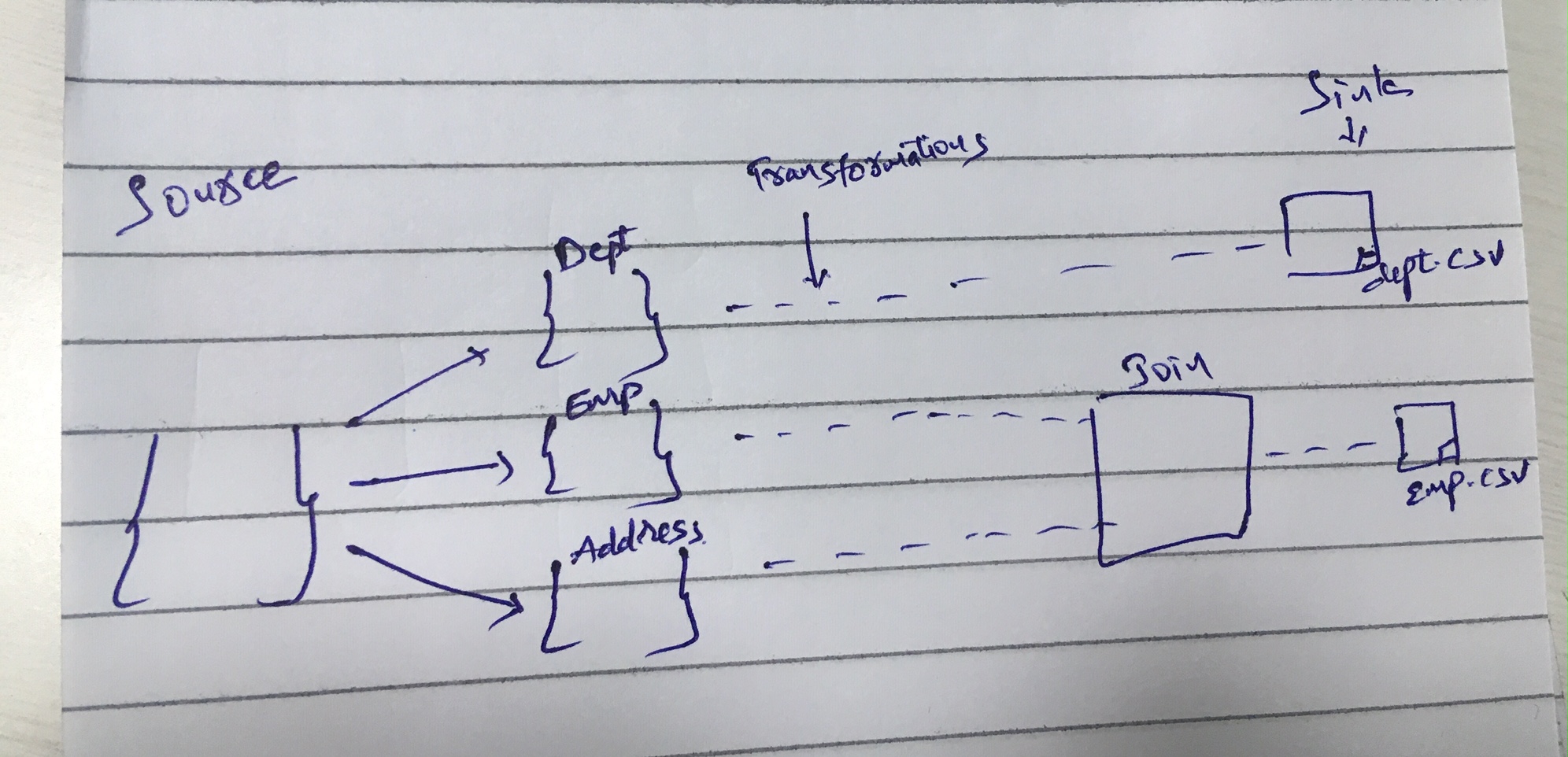Split one dataset into multiple
|
Hi,
I have a custom iterator which gives data of multitple entities. For example iterator gives data of Department, Employee and Address. Record's entity type is identified by a field value. And I need to apply different set of operations on each dataset. Ex., Department data may have aggregations, Employee and Address data are simply joined together after some filteration. If I have different datasets for each entity type the job is easy. So I am trying to split incoming data to different datasets. What is the best possible way to achieve this ? *Iterator can be read only once. Thank you, Madan. |
|
Hi madan, I think you need to hash partition your records. Flink supports hash partitioning of data. The operator is keyBy. If the value of your tag field is enumerable, you can also use split/select to achieve your purpose. Thanks, vino. madan <[hidden email]> 于2018年11月5日周一 下午6:37写道:
|
|
Hi Vino,
Thank you for suggestions. In my case I am using DataSet since data is limited, and split/select is not available on DataSet api. I doubt even hash partition might not work for me. By doing hash partition, I do not know which partition is having which entity data (Dept, Emp in my example. And sometimes hasing might be same for 2 different entities). And on that partition I need to apply some other transformations(based on partition data) which is not possible using MapPartitionFunction. Please suggest if my understanding is wrong and usecase is achievable (little example is of great help). Thank you, Madan On Tue, Nov 6, 2018 at 12:03 PM vino yang <[hidden email]> wrote:
Thank you, Madan. |
Re: Split one dataset into multiple
|
You have to define a common type, like an n-ary Either type and return that from your source / operator. The resulting DataSet can be consumed by multiple FlatmapFunctions, each extracting and forwarding one of the the result types. Cheers, Fabian Am Di., 6. Nov. 2018 um 10:40 Uhr schrieb madan <[hidden email]>:
|
|
Hi Fabian, Is it multiple FlatmapFunctions on same Dataset or chaining of FlatmapFunctions ? My usecase is something like below diagram (intermediate transformations might change),  If we can have multiple FlatmapFunctions on same DataSet, above case works fine. But to my understanding it is not possible (correct me If I am wrong). And chaining multiple FlatmapFunctions might not work for my case. Please guide If I am missing something. If possible please provide some psuedo code. Thank you, Madan On Tue, Nov 6, 2018 at 3:55 PM Fabian Hueske <[hidden email]> wrote:
Thank you, Madan. |
Re: Split one dataset into multiple
|
Hi, Multiple flatmaps on a single DataSet work perfectly fine. All functions will see the full DataSet. DataSet input = ... DataSet out1 = input.flatMap(func1); DataSet out2 + input.flatMap(func2); ... Best, Fabian Am Di., 6. Nov. 2018 um 13:19 Uhr schrieb madan <[hidden email]>:
|
«
Return to (DEPRECATED) Apache Flink User Mailing List archive.
|
1 view|%1 views
| Free forum by Nabble | Edit this page |


